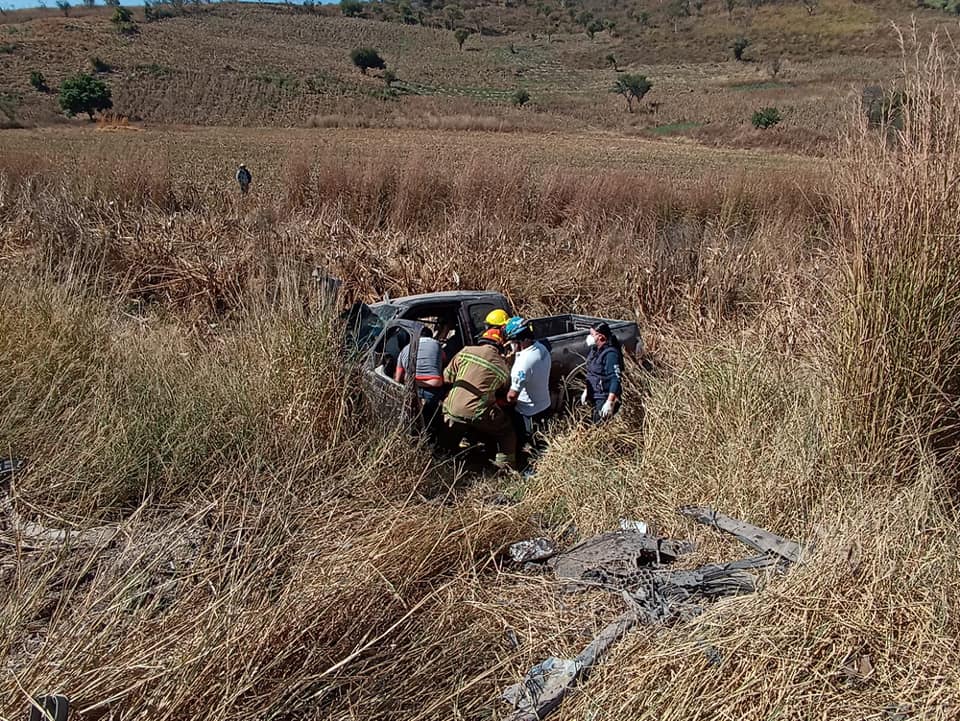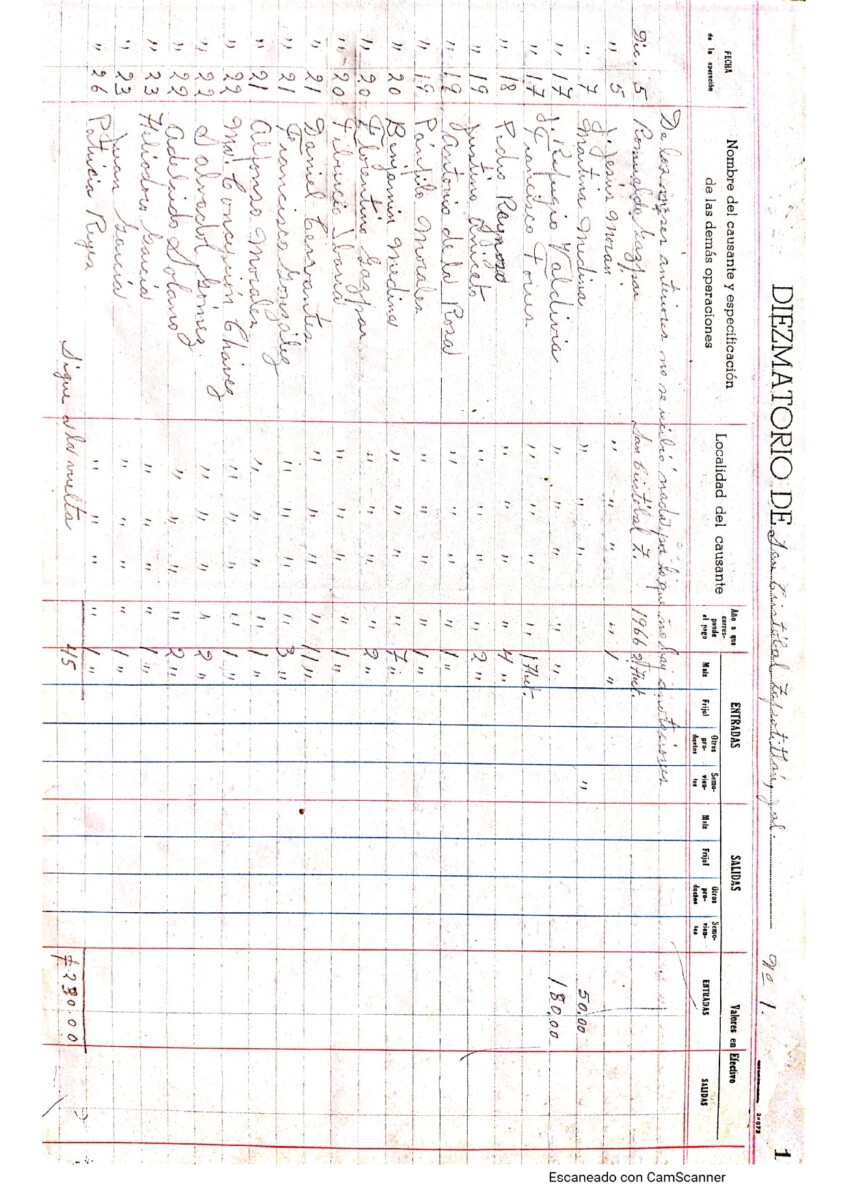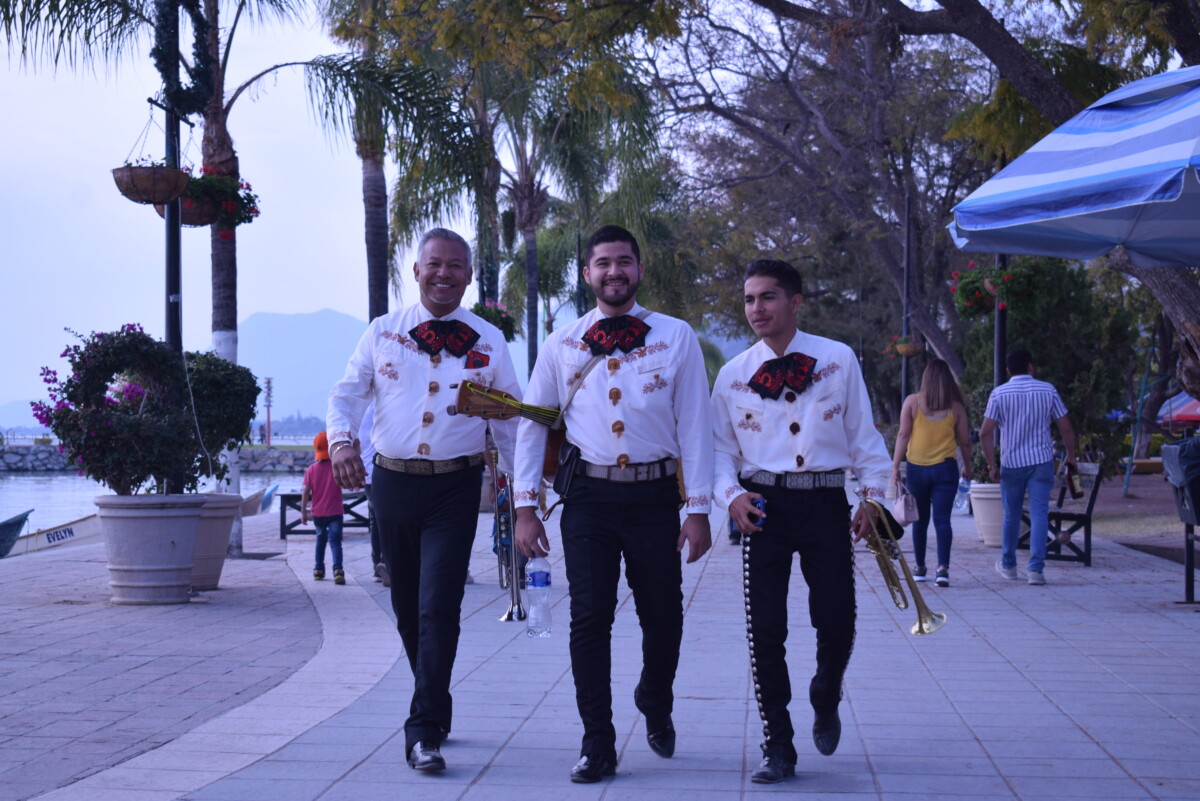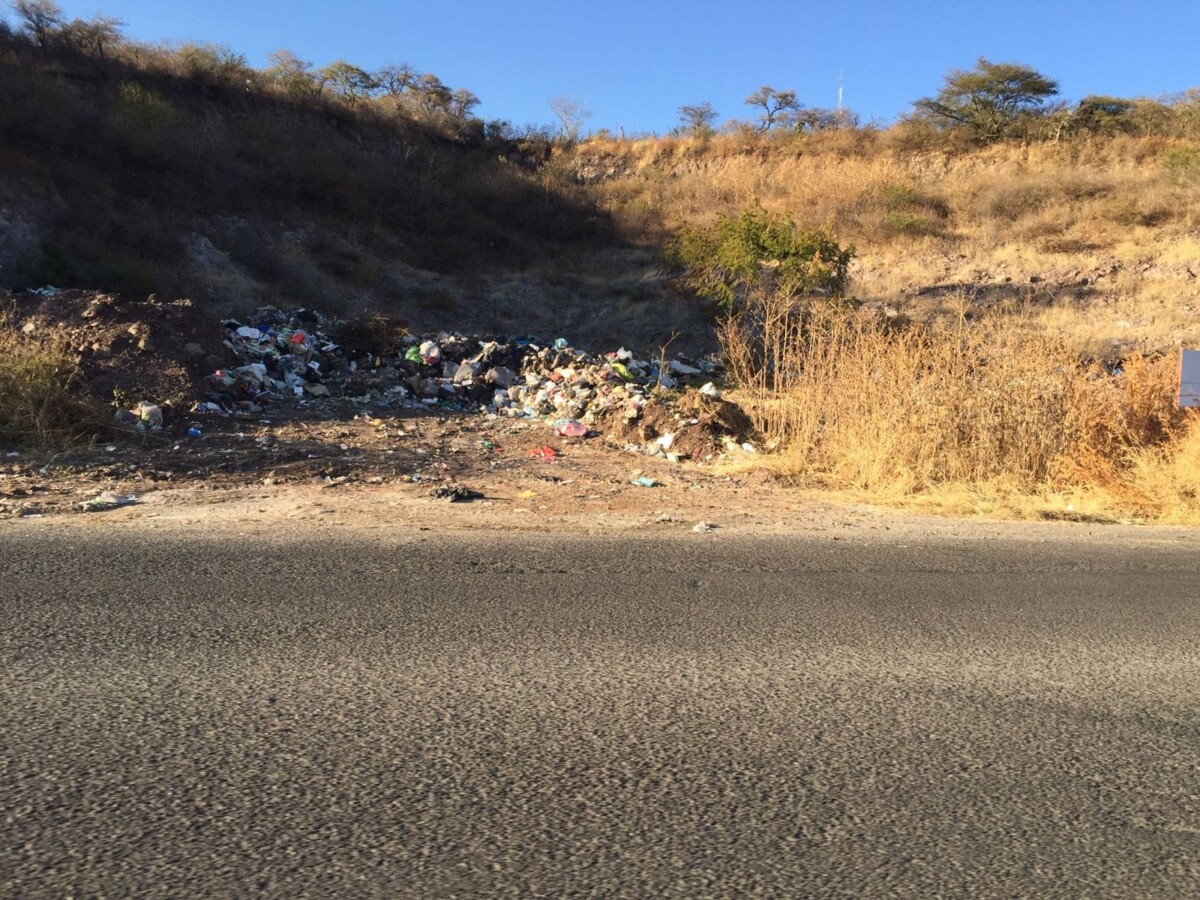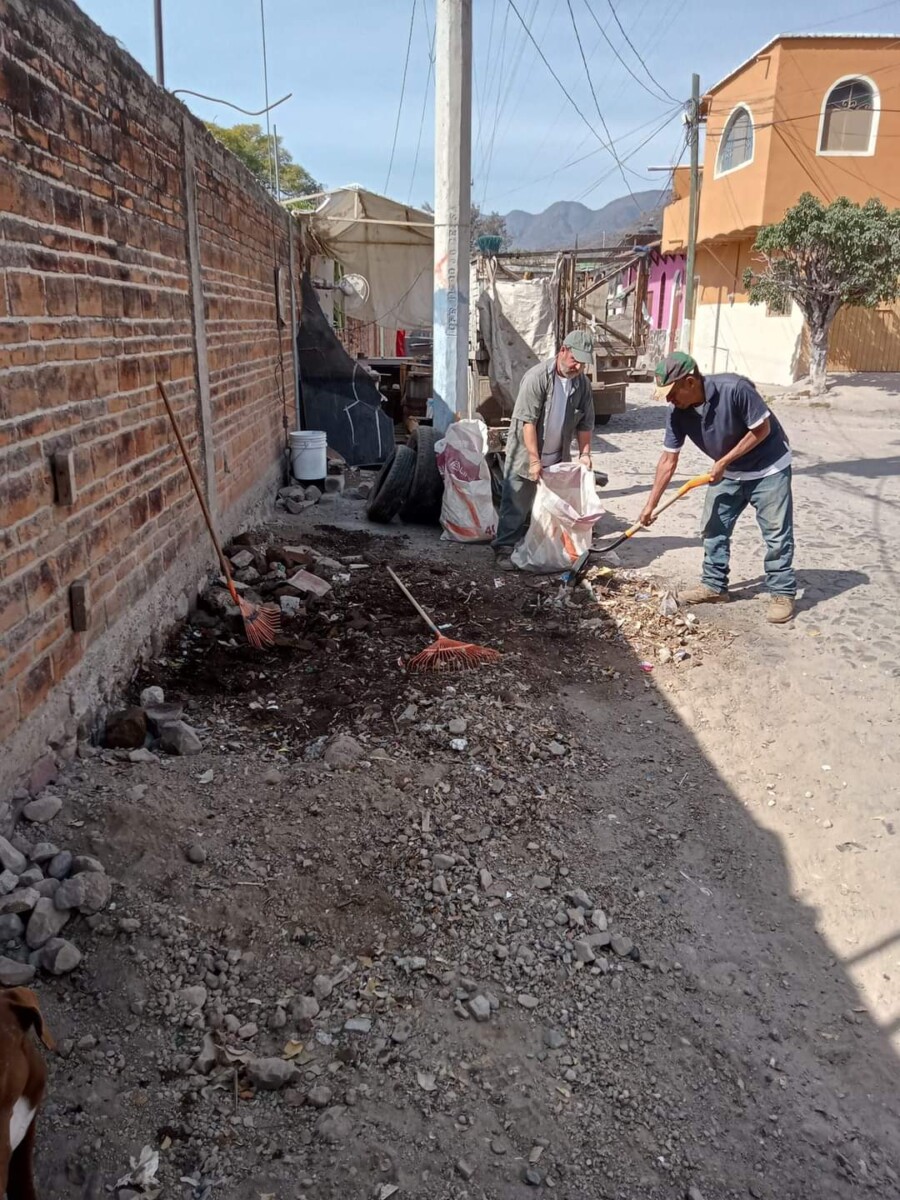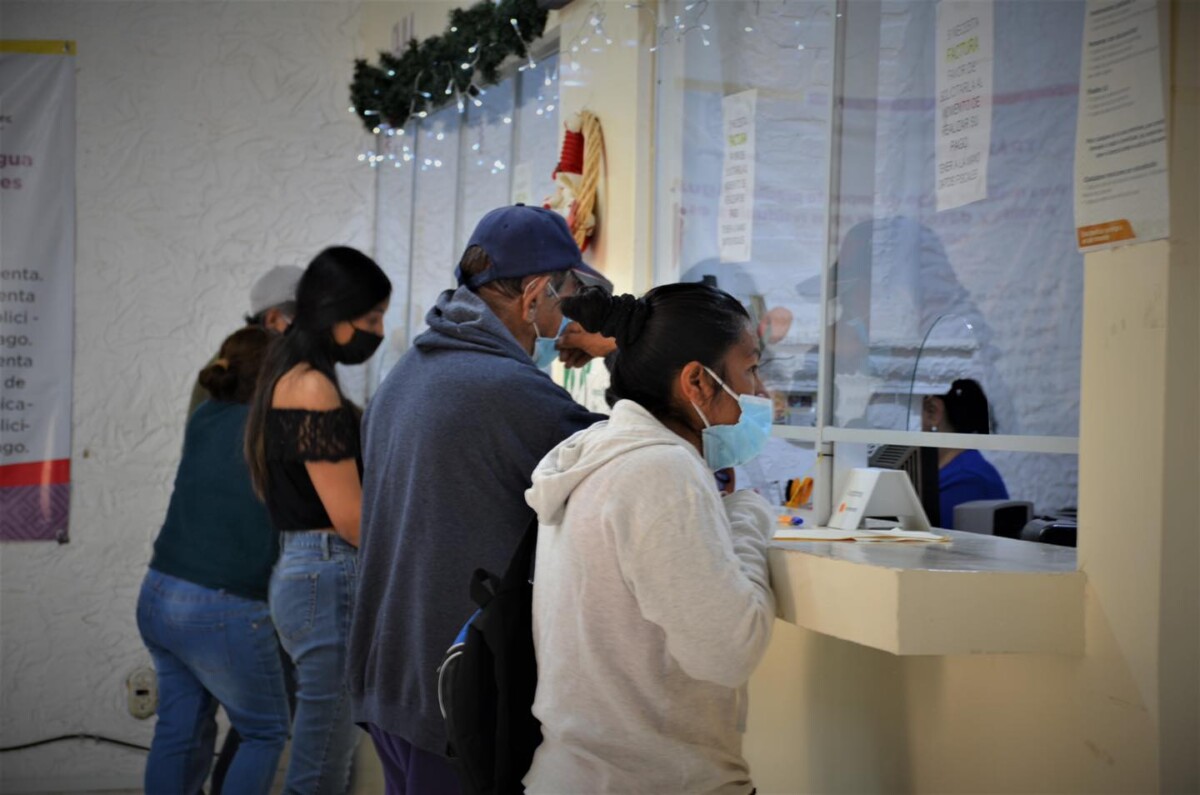en inglés
Three dead, ten injured in El Molino car accident
Three dead after fatal accident on the El Molino stretch, this would be the third accident at the same point so far this year. Photo: Courtesy.
Héctor Ruiz Mejía: Three people died and ten were injured in the tragic accident that occurred on the El Molino stretch in the municipality of Jocotepec on Sunday, January 16. The Guadalajara-Morelia highway at kilometer 11, on the El Molino stretch, was the scene of the accident involving three vehicles.
The accident claimed the lives of a baby girl of approximately one year of age and a man of approximately 45 years of age who died at the scene; in addition, a woman died while being transported to clinic 180 in Guadalajara. Ten other people were injured.
Civil Protection and Firefighters of Jocotepec, with the same unit from Acatlán de Juárez, assisted the woman who was pinned in the compact car; who unfortunately lost her life during the transfer.
One of the injured lost her leg just above the knee, according to medical authorities of the Rafael Gómez Rodríguez Municipal Clinic.
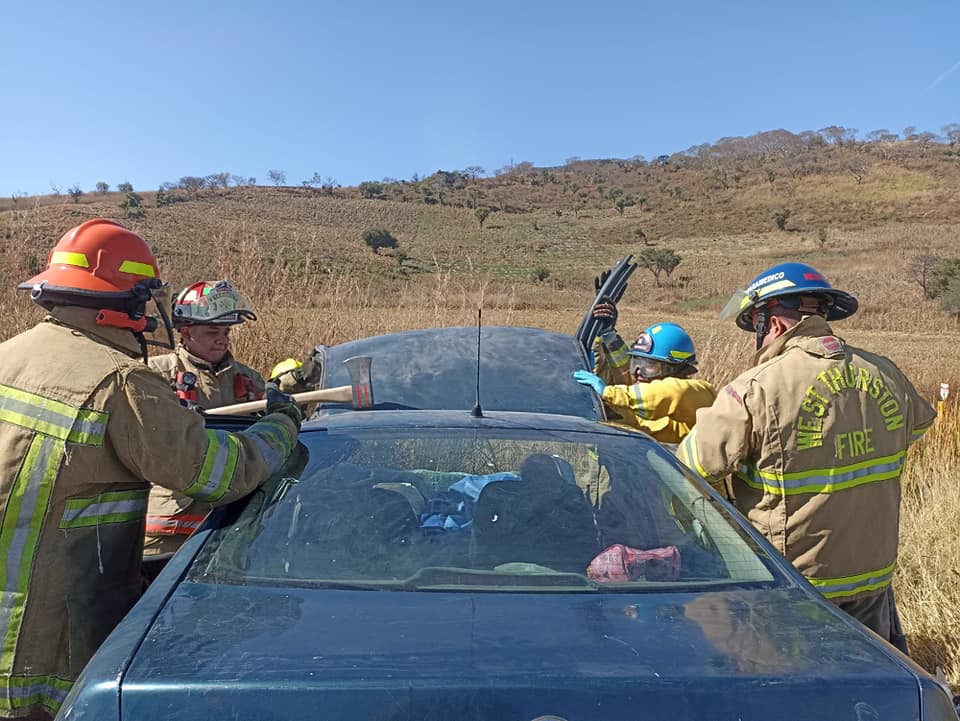
Hydraulic machinery was needed to free one of the victims who was pinned in. Photo: Courtesy.
According to the medical and Civil Protection authorities, none of those involved were from Jocotepec, they were all from Zapopan and Cerro del Cuatro in Guadalajara and they added that they were on their way to a baseball game.
The reason for the fatal accident is still unknown, Oscar Rameño, Director of Mobility of Jocotepec. The Jalisco Institute of Forensic Sciences (IJCF) is reviewing the accident.
However, according to Civil Protection authorities, the main causes of accidents, specifically in the El Molino stretch, are mostly due to speeding, since it is a drastically reduced stretch, causing drivers to lose control.
So far this year, as of January 20, there have already been three accidents, involving a dairy truck that overturned and a private van whose driver was injured.
Civil Protection authorities urged the community to take the appropriate precautions when traveling along the stretch and to respect the speed limits because «your life can be changed in a split second.»
Translated by Kerry Watson
Chronicles of La Ribera:
By: María del Refugio Reynozo Medina
The original tithe ledger where the contributions pledged by the parishioners were recorded. Photo: María del Refugio Reynozo Medina. Courtesy Historical Archive of the parish of San Cristóbal Zapotitlán.
«Honor the LORD with your possessions and with the first fruits of all your produce,» so says the biblical quote from Proverbs 3:9.
Nena is 85 years old and her sister Consuelo is 95 years old. Consuelo remembers that since she was about five years old, her parents taught them the Catholic faith. Even before the temple was finished being constructed they would go to mass. She remembers that the children brought little buckets filled with donkey excrement and straw to make the traditional adobes on site. In those years there was a lot of excrement available to make adobe. Animals were allowed to go loose, walking, chewing the grass in the streets, getting between the fences.
The settlers not only contributed to the construction of the temple, whose exact date is unknown, but also to the ongoing support of the church through the tithe.
In the historical archives of the parish of San Cristobal Zapotitlán are the tithe ledgers, or the books where the income that the church received from the parishioners was recorded.
The tithe was commonly given from the fruit of the harvest, sometimes the offering was chickens, pigs or even eggs. In these historical records, which date from 1966 to 1970, the names and the number of loads of harvest that were given to the church appear (a load was about two sacks or “costales” as we know them today). The parish priest was Pedro Ramírez González. Nena remembers him, he was a tall, blue-eyed, laughing man.
-I remember my dad carrying a small load of corn from his land clearing for the tithe.
During the harvest months, you could see dozens of donkeys outside the temple unloading bags of grain, usually corn, sometimes chickpeas. Behind the temple, where Alcoholics Anonymous meetings are held today, there was a shed where they kept whatever was tithed.
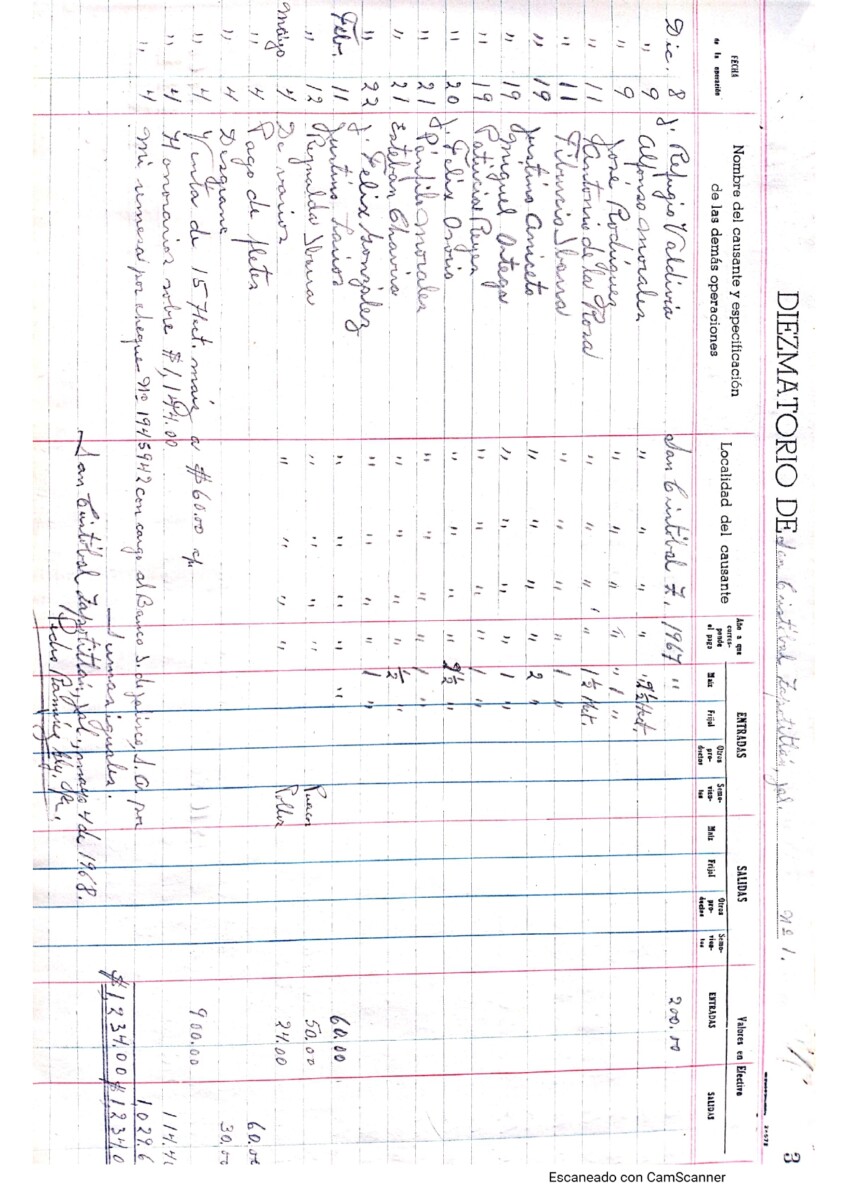
The tithe was signed by the priest Pedro Ramírez González. Photo: María del Refugio Reynozo Medina. Courtesy Historical Archive of the parish of San Cristóbal Zapotitlán.
Nena remembers that some brought chickens. She would go out into the streets with a basket to collect eggs house by house for the improvements of the church, and also money for the priest’s allowance. Many chicken sellers came to the town.
-They would shout, «Gallinas que vendaaan!” “Chickens for sale!” They carried them on their shoulders holding them by their legs and others carried them by their fists like bunches.
In the historical archives appears a list of the names of the characters that existed, all of them now deceased, but alive in the memory of this 85-year-old woman.
One of the names is Florentino Gaspar pledging 2 loads of corn. He and Carmen Mosqueda were the owners of a store where they sold petroleum that was the fuel for the devices that illuminated the nights, because there was no electric energy. They kept it in big drums and the people came to get it in bottles.
They also sold the corn with which the women made the nixtamal, to later turn it into tortillas that they prepared every day on a stove and with a metate. The lard was sold in a rectangle of brown paper.
Another name that appears is that of Benjamín Medina, pledging 7 loads of corn.
Daniel Cervantes appears in the roster pledging 11 loads. He was a generous benefactor of the temple; Cervantes donated the images of the Sacred Heart and the full size Virgin Mary that he brought from Guadalajara and is still in the parish today. He and his sister Luz Cervantes sold a piece of land to contribute to the completion of the church.
The list goes on; Alfonso Morales, who pledged one load. He was the father of Julia Morales, the petite, dark-haired woman with the eternally smiling face in charge of the mail. Many women anxiously awaited her passage on the mail route.
It was said that on one occasion a suitor asked her if she wanted to be his girlfriend, and she replied, «Later.» She was asked again to know his answer, she said she meant later in another time. And she continued to deliver sighs from house to house.
-I haven’t received anything, Julia,» some of the women would plead.
Juanita remembers anxiously awaiting Julia’s arrival, because her husband was in the United States working and among the love letters came some US dollars.
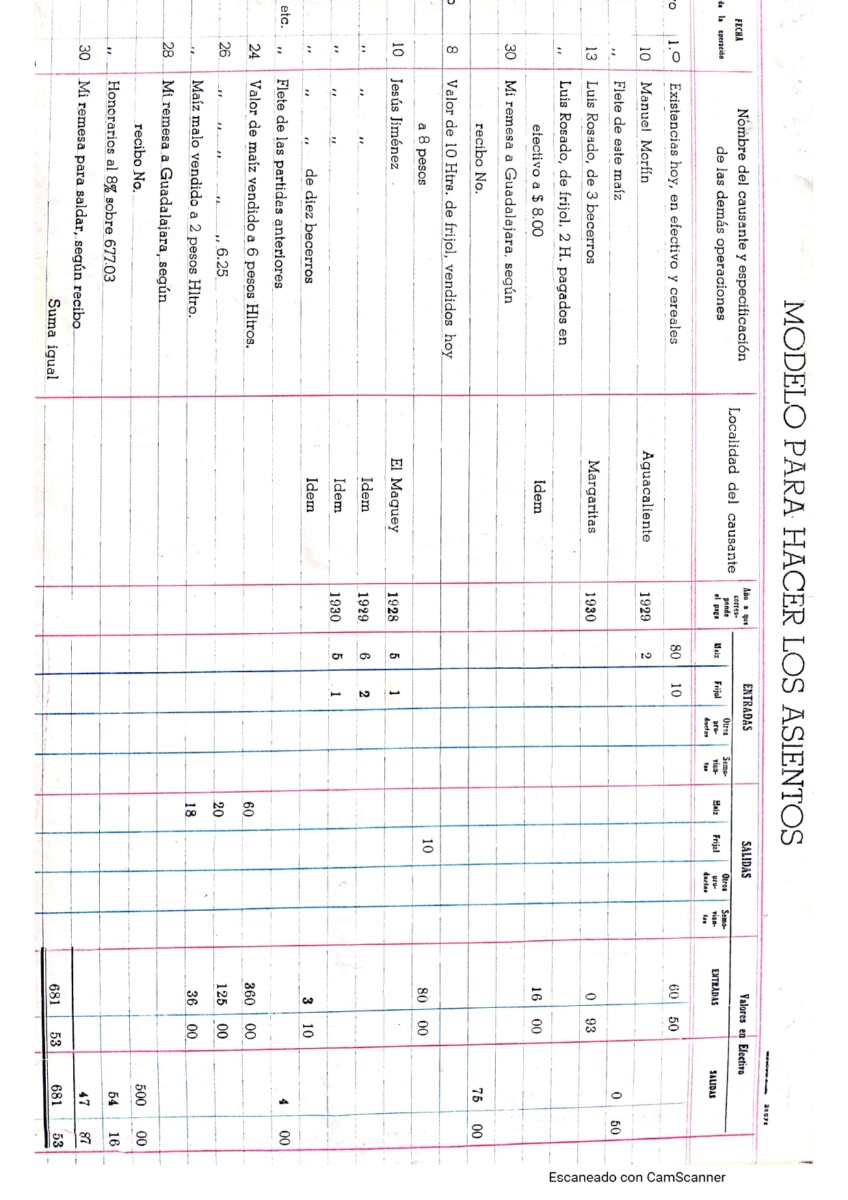
Example of filling out the tithe. On the first page of the document. Photo: María del Refugio Reynozo Medina. Courtesy Historical Archive of the parish of San Cristóbal Zapotitlán.
Justino Larios, who also pledged a load, was a great musician, he played the clarinet. His sister Dominga Larios had the first telephone booth in town, the wooden booth was attached to the wall, it had a handle and keys to dial.
-San Cristóbal calling San Pedro,» the operator Dominga Larios would say.
She relayed many phone messages from the priest.
In the tithe list is also José Rodríguez who contributed a load. He was a bricklayer, almost the only one in those days. He made his houses all the same, a small room with a window and a corridor.
Esteban Chavira also appears in the record with the contribution of half a load, he did religious plays or ‘pastorelas’ in the street, he read the dialogues to the devil and to Gila who was another character.
One of the songs said:
-The Virgin was washing and St. Joseph was tending, the child was crying from the cold he had.
The rehearsals for the pastorelas were at night when the men and women finished their days under the protection of candles or oil lanterns. When someone wanted the shepherds to sing for them they would invite them and make them food, that was only at Christmas time.
Nena remembers that, in one procession to Jocotepec during the traditional January festivities of the Señor del Monte, Chavira made a float and took Victor Amezcua as Jesus Christ, the people even cried to see the character so real, they say that this photo was taken to Rome by a priest who came to visit and the people went on a pilgrimage to greet him at the crossroads.
Brígida Velasco, who pledged half a load, made very ornate wax candles, the ornaments stood out like a glow of the wax itself. Nena remembers a scene with Brígida holding the wick and letting the wax drip to form candles of all sizes. Brigida’s son was a hairdresser, they say that he used to splash water on his clients’ heads to prepare their hair for the haircut.
The drawn landscape of the San Cristóbal of yesteryear seeps through the memories of the men and women who lived it. Memories fade, but the names of those who existed are there in the documents, in the tithe lists that remain the mute witness of the inevitable passage of time.
Translated by Kerry Watson
Chapala Musicians’ Guild Reports Good Winter Season
Members of Mariachi Centenario de Chapala (from left to right): Eric Serna, Ramón Úlises and Brandom.
Jazmín Stengel, Ajijic (JAL)-At an informal meeting between Laguna Seminario and members of the Chapala Musicians’ Guild, the mariachi “Centenario de Chapala” group’s trumpet player, Eric Serna, said «It [this season] wasn’t the best, but it was better than last year.»
Among mariachi groups that work on the malecón and Chapala tourist area such as the groups “Centenario,” “Aguila,” and “Norteño Los Alacranes,” group members mentioned having earned up to a thousand pesos a day per person during the winter season. Each mariachi group charges 250 pesos per song to the general public. Groups usually consist of five to seven musicians. The good season began in November; however, during the holidays «we even get tired of working,» Serna added.
The situation in Chapala has improved to such an extent that Serna and his colleagues have preferred to remain in Chapala instead of traveling to Puerto Vallarta as they usually do during the low season. On the other hand, the soloists working in downtown Ajijic and the surrounding restaurants considered December as having been the lowest month of the season, although in January «people have been more splendid,» agreed three area guitarists. This was echoed by merchants of the Tianguis Navideño [merchants who sold their merchandise in Chapala’s plaza last holiday season], who complained about the low sales during the winter holidays for businesses of all sizes.
Translated by MaryAnne Marble
Clandestine waste continues to be dumped by Jocotepec government
«Temporary» dumps by City Hall persist, according to neighbors of the community of San Luciano.
Héctor Ruiz Mejía: About ten tons of garbage has accumulated near the Guadalajara – Morelia ramp by the San Juan Cosalá highway, reported neighbors of the community.
According to those interviewed, City Hall personnel continue to dump garbage on the stretch about 20 meters before the ramp leading to Guadalajara from the Carretera.
«We have already reported it, but it seems that this will continue and it makes us sad,» commented one of the complainants who travels daily along the stretch and sees the gradual increase in garbage.
Those interviewed said that there is already about ten tons of garbage accumulated and that despite the reports, there has been no response from the municipality.
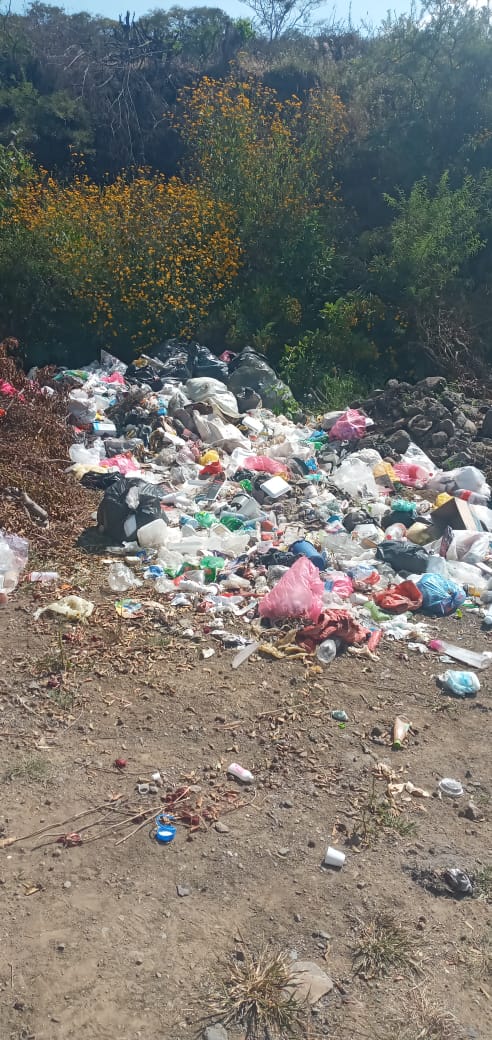
Residents of the community of San Luciano lament the clandestine dumping of garbage.
“Apparently, they have made it a temporary landfill,» one of the interviewees stated, and expressed his concern about the garbage collection crisis, which persists and, in his eyes, does not seem to be coming to an end. The situation has been going on for some time and is beginning to generate complications, such as the release of bad odors, as well as the contamination of the land and the landscape.
Although Semanario Laguna has not yet been to the site of the report, the neighbors claimed with despair that this will continue, and urged the City Hall to take action on the matter.
This is not the first incident of clandestine garbage dumping:, one person interviewed recalled that Semanario Laguna had covered another incident in the community of San Luciano.
Neighbors of the community were concerned about the possibility that it will be another temporary dump. The community is waiting to see what will happen with the waste generated by the Señor del Monte festivities, as they remain skeptical about the fate of the waste.
«Let’s just hope they already have a landfill to deposit all the garbage from the festivities, we don’t want them to come and dump it here,» urged the residents of the community of San Luciano.
Translated by Christalle Dalsted
Ajijic’s Delegado focused on optimizing public services in first three months
Maximiliano Macias Arceo’s priorities are sports, the proper functioning of all services and working hand in hand with the people of Ajijic
Sofía Medeles (Ajijic, Jal.)- Three months after taking office, the head of the town of Ajijic, Maximiliano «Max» Macías Arceo, said that the unforeseen events that have occurred at the beginning of the administration (such as the landslide that affected mainly La Canacinta and the unexpected fall of a tree in the main square) have not distracted him from his goal. His intention is to improve public services for the population, such as street cleaning and the patching of cobblestones.
For Macías Arceo it is of utmost importance to optimally maintain services such as availability of drinking water, street lighting and street cleaning in addition to maintaining communication with the people of Ajijic to learn their needs first hand.
«The work we have been doing is mostly maintenance. For example, repairs in the main square, in the services of the boardwalk, several cleanings in the creek of the cemetery, as well as in the streets,» he named as the work done in the last three months.
As for the projects that are coming up for Ajijic, he said that although sometimes people are looking to see big works, both he and the president of Chapala, Alejandro Aguirre Curiel, seek to prioritize works that really benefit the population and not projects that are just done for the sake of doing.
«Ones that will always continue to be done are, for example, patching potholes, for which I have always asked Public Works to use a sustainable material. Currently they point out that it is jal, when in reality it is composed of 90 percent of a volcanic soil called tepetate and 10 percent jal (pumice), in order to maintain the tradition and image of the town.»
On the other hand, he commented that they are already working on finishing the works of the Ajijic Sports Unit located in La Floresta in the area of Los Carriles, since the previous administration did not complete them.
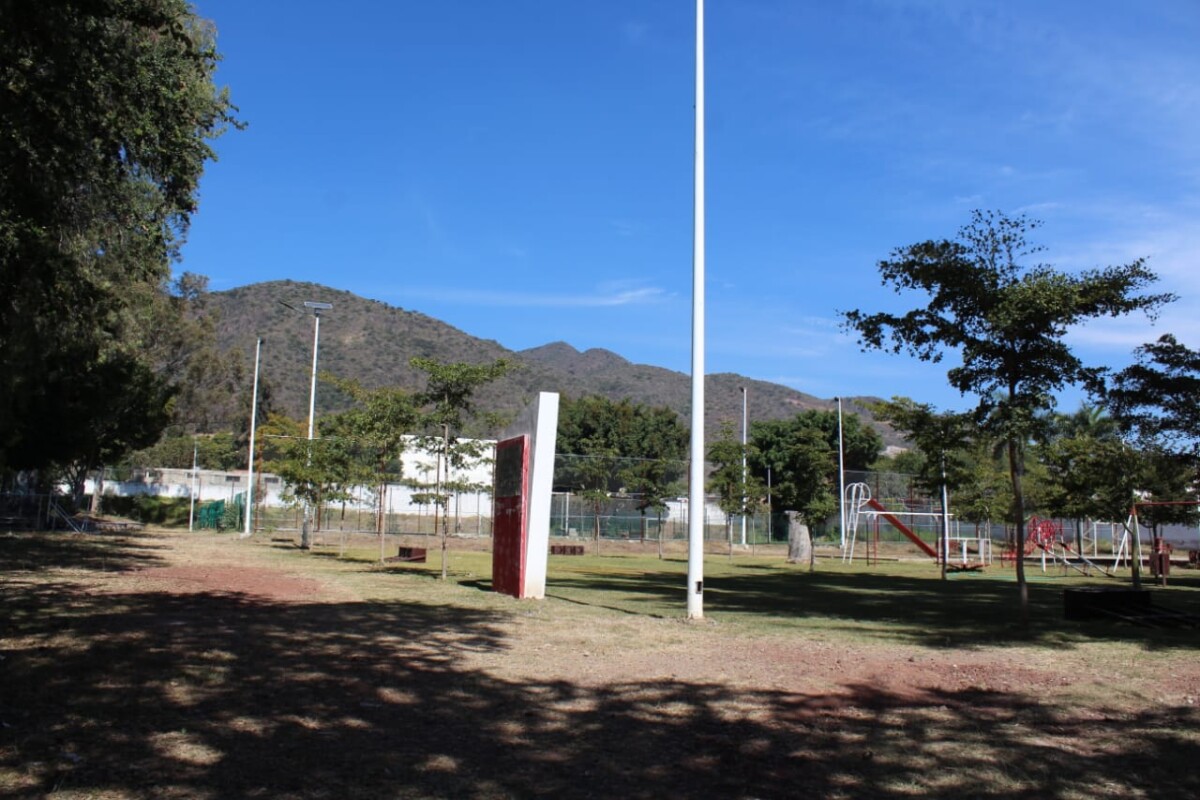
One of the projects is to finish the Ajijic Sports Unit, located in front of Los Carriles, in La Floresta.
He and the person in charge of sports in Ajijic, Alejandro González, are very enthusiastic about these works. They are also planning to maintain the soccer field located to the west of Ajijic in the area known as El Bajío, as well as the future construction of bathrooms in the area of La Cruz (at the end of Nicolas Bravo Street, where the Malecón corridor ends) and the cleaning of the lakeshore.
«We want to provide works that give good service to everyone, to have the areas of the square, the streets and the boardwalk ready and conditioned for everyone to go and enjoy, as well as to give attention to all Ajijic beyond the center. The president, the head of COMUDE (The Municipal Sports Council) Ajijic, and above all the people, are working together to achieve this,» declared Macias Arceo.

Colón Street, in the center of Ajijic, is a good example of the maintenance that the cobblestones of the streets of the Pueblo Mágico have received
Max added that for him, the most important thing is to reactivate sports and work with young people, carry out multiple cleaning campaigns and the creation of committees in the neighborhoods to have a more immediate communication.
Finally, he was asked if he would run in the town elections, to which he responded, «The future is uncertain and I could not say now if I would do it. If the people, because of my work, asked me to do so, I would do it. I would not make promises, I would base it on the actions and the work that has already been done. My stay in this position has always been to seek a positive change in Ajijic.»
Translated by Sydney Metrick
Ajijic’s Office Manager asks for people to keep streets and public spaces free of garbage and discarded junk
Cleanup of Emiliano Zapata street, where workers picked up debris, tires and an abandoned vending cart (Photo: Delegación Ajijic 2021-2024).
Sofía Medeles (Ajijic, Jal.)- After government workers clean Ajijic’s streets and removed handbills, armchairs, tires and even an abandoned vintage vehicle, the Head of Office of the Ajijic delegation, Maximiliano Max Macías Arceo asked people to stop discarding their trunks and garbage in the streets.
Max commented that in the last stretch they cleaned, Zapata Street from its intersection with Revolución, within two blocks the truck was full of tires, old chairs, and other junk thrown on the side of the street. The workers also cleaned the creek in the Ajijic Cemetery for the third time because people throw so much garbage in it. He added that the cleanup work will continue over the next few days.
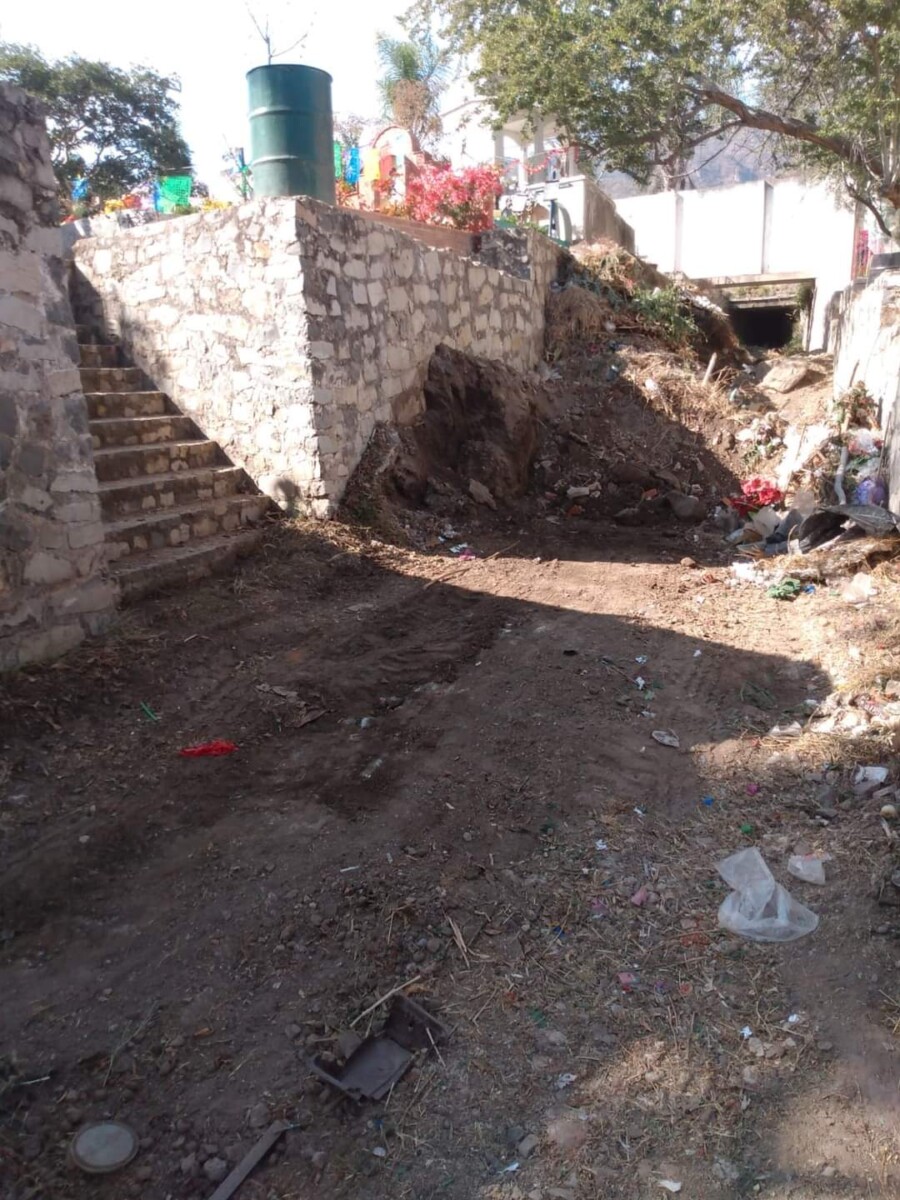
Stream next to the cemetery before being cleaned (Photo; Delegación Ajijic 2021-2024).
«In the case of the cemetery, a budget has already been requested for a gate because the creek is always open and used as a dumping ground for debris, garden garbage, and old furniture. The entrance of people will not be affected, only the creek will be closed, and signs posted with the number of the delegation for reports of this practice», commented Max.
He also e said that they have received many reports about the streets, requesting cleanings so he asked for the support of the residents to keep the streets clean for a long time.
«In some cases, it is cleaned, and a few days later, the garbage is back. This is because in some places the garbage bags are put outside before the truck passes, like the night before, and the stray dogs break the bags. So the next day the people from the truck only take the bags that are closed , forcing us to clean up garbage constantly. I ask for your support to remove the garbage in a timely manner,» he said.
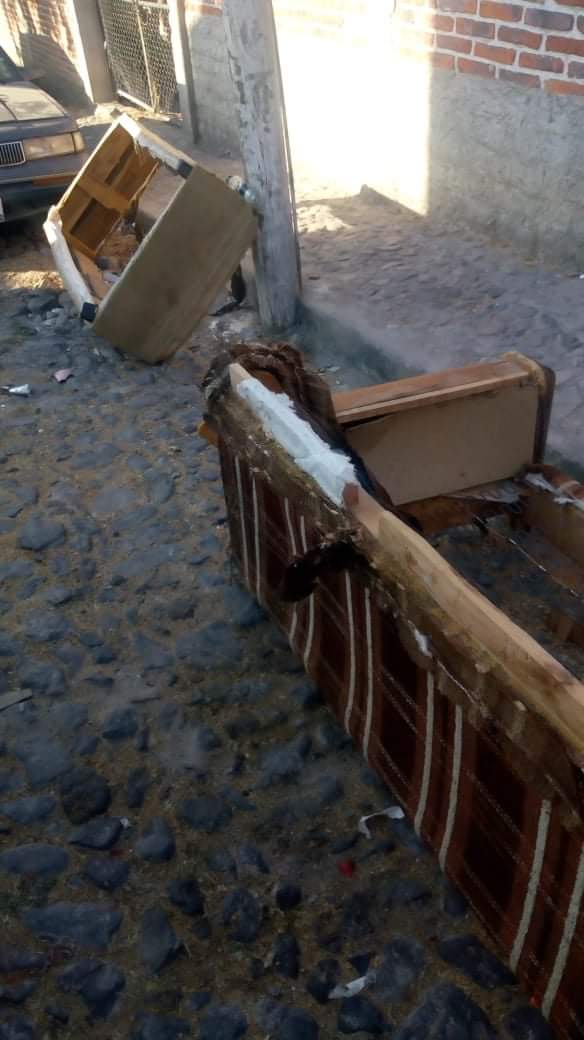
Discarded armchairs in the street (Photo: Delegation Ajijic 2021-2024).
Max, said that if any inhabitant of the delegation needs to throw away tires, instead of taking them to the street, they should call the number of the delegation (33 3490 0382), so that they can be picked up for an amount of 10 pesos per tire, and they will be sent to Ecology Chapala which pays 12 pesos per tire for them to be discarded.
Likewise, for large items, such as furniture, the delegation offers the service, because it has authorization from the landfill to pick them up and take them to their final destination. He commented that the service is free, and to request it, they also have to call the number of the delegation.
Translated by Patrick O’Heffernan
Magical Towns in Jalisco will receive 15 million pesos this year
Some of the houses on Zaragoza Street still preserve the typical architecture of Ajijic and bright murals on their facades.
Sofía Medeles (Ajijic, Jalisco) – The 2022 Jalisco State Expenditure Budget allocates 15 million pesos for the nine Magical Towns of the state, ‘which would mean 1.666 million pesos for Ajijicif, as it was last year, the budget is split equally among Jalisco’s nine Pueblos Mágicos.
In 2021 Ajijic received 1.333 million pesos for its Pueblo Mágico budget, some of which was returned unused to the State. Part of the budget was slated for a festival that never took place due to the pandemic, some for a mural contest, some for an as yet unopened information booth on the boardwalk, and some for signage that has not been completed.
The 2022 Expenditure Budget of the Government of Jalisco has prioritized health, security, education and infrastructure but it has allocated 152 million pesos to tourism, of which 15 million are for the nine Magical Towns: Tapalpa, Mazamitla, Lagos de Moreno, Mascota, San Sebastián del Oeste, Talpa de Allende, Tequila, San Pedro Tlaquepaque and Ajijic.
To learn more details about the Pueblos Mágicos in our state, visit the website: https://secturjal.jalisco.gob.mx/nuestro-estado/pueblos-magicos.
Translated by Patrick O’Heffernan
Five percent tax increase for Jocotepec
City Hall bets on community outreach to improve tax collection. Photo: Courtesy.
Héctor Ruiz Mejía.- The municipality of Jocotepec approved a general increase of five percent in taxes for the fiscal year 2022, said Marcela Jiménez Góngora, director of the Treasury.
The new revenue law proposed by the Plenary of the Jocotepec City Council was approved by the Governor of Jalisco, Enrique Alfaro Ramírez, through the secretary of the H. Congress of the State, under decree number 28644/LXIII/21.
The Public Treasury of Jocotepec projects the estimated collection of 205,661,384 pesos during the fiscal year from January 1 to December 31, 2022.
Water service, like other services, will increase by five percent, except for «some users in very specific cases, who will have a higher percentage because there was some update in their accounts,» commented the interviewee.
In this case, the director suggested approaching the potable water directorate to specify the charges, since the intention is to encourage the community to bring current accounts.
However, in order to reach the collection goal, the Jocotepec City Hall has implemented new measures to generate an approach to the community and encourage people to pay their taxes on time.
A new online payment platform is available where a bot will display a menu with the property or water bill and will generate a reference to make the payment in OXXO, payment at cash registers, even via WhatsApp.
Also, the City Hall announced the new expanded hours to pay taxes that will include Saturdays from 9:00 am to 1:00 pm.
This after José Miguel Gómez López declared that the municipality was under a terrible administration of the collection issue, «there was chaos in the collection issue, such as water, many irregularities,» said the mayor.
While the new measures are expected to improve tax collection, the Treasury Director assured that they will wait until January 15 to have a comparison of how much the new measures helped the population to regularize and pay their taxes on time.
Translated by Kerry Watson
Chapala City Hall is remodeling its restrooms
The remodeling of the restrooms at Chapala City Hall is expected to be completed in the next few weeks.
Jazmín Stengel –Director of Social Communication Elizabeth Oropeza announced today that the ongoing remodeling of the restrooms at Chapala City Hall will cost approximately 70 thousand pesos and should be completed in a few weeks. She added that the facilities are being completely remodeled because they were left in very bad condition.
She said that the remodeling consisted of «gutting of the previous restrooms, unclogging and cleaning the drains, replacing drinking water pipes, tiling walls, installing new wall and floor tiles, as well as new bowls, urinals and sinks. »
In the next stage, the doors will be repainted, and the glass in the mirrors will be replaced, and new screens installed. «Only the screens are contracted out; the rest of the work is being performed by City Hall’s employees, » Oropeza pointed out.
The remodeling of the bathrooms in the Chapala City Hall does not require the supervision of the National Institute of Anthropology and History (INAH), because the building was constructed after 1900.The director of Municipal Patrimony, Antonio Velazco, said that «the law establishes that it (INAH ) protects paleontological, archeological, historical and artistic assets produced before 1900». Since the building was constructed in 1908 as the Antiguo Hotel Nido de Chapala, it is exempt.
Access to Lake Chapala still closed 100 days after the beginning of Alejandro Aguirre’s administration
Callejón Azucena, used as a private garage by the Lomelí family, according to neighbors in the area.
Jazmín Stengel (Chapala). A little more than 100 days into the 2021-2024 administration and despite the fact that it was a campaign promise of the new president of Chapala, Alejandro de Jesús Aguirre Curiel, the accesses to the Lake are still closed to the general public. No information has been given as to when they will be opened.
Laguna investigated the current situation of the accesses to the Lake from Hidalgo Avenue in the municipal capital. They were closed to the public in 2020 during the administration of Moisés Alejandro Anaya Aguilar (2018-2021) and have remained closed.
At the time, Moisés Anaya (who is now a councilman) declared, «if we remove the gates we could be involved in a criminal offense, therefore, we are investigating thoroughly so as not to incur criminal charges.” The investigation remained open.

Callejón Las Palomas, according to former president Moisés Anaya this place was sold to private individuals.
Before the end of his administration, Moisés Anaya argued that the failure to remove the gates that prevented the fishermen of Barrio de Lourdes from entering was for the safety of the neighbors who had previously suffered robberies.
The National Water Commission (CONAGUA) clarified in its visit on October 28, 2020 that the opening of the alleys with access to the Lake on Hidalgo Avenue is an action that is the responsibility of the Municipality of Chapala. The previous Director of Ecology and Sustainable Development, José Guadalupe Jaime Ibáñez was also informed that these alleys are not in a federal zone and the review work should be headed by the Municipal Government. To date, no action has been taken.
The first alley ‘Azucena’ is being used as a garage for a private house. The cyclone mesh gate is next to an entrance, observed Laguna. According to neighbors, the alley is restricted by the Lomelí family, «they decide who has access and who doesn’t,» even though it is a public space.

Callejón del Arroyo was closed by Villa Hamburgo.
The next privatized space ‘Callejón Las Palomas’ has an entrance marked with the number 41, a doorbell and a security video camera. According to the former president Moisés Anaya during his administration, the place was sold as private property.
A small alleyway identified by neighbors as ‘El arroyo’ was also closed off with cyclone mesh and barbed wire, about ten meters from the sidewalk, just behind the bushes that cover their easy view. «This alley was taken over by Villa Hamburgo which is located next to it,» neighbors assured.
The owners of Villa Marijo, marked 266 Hidalgo Avenue, took possession of the unnamed alley next to their property, installing a blue metal fence that prevents passage to the lake. Initially the fence was exposed to view, now it is covered by a handful of «decorative» trees in pots.

Villa Marijo’s invasion of the alley next to the property.
Finally, the University of Guadalajara, with the Villa Montecarlo hotel, which for many years has had an alley on its property, joins this list of landowners blocking the way to the lake.
«It is very bad that they are blocked, because these alleys have been there for years and years. They give people access to the lake, the fishermen, tourists and others. The authorities do agree that the inhabitants of these houses block these streets», said a neighbor.
There are other neighbors who do not look favorably on this type of action; however, they understand that access to these spaces have facilitated illicit activities in the past, including drug use, urination in the streets, and house burglary.
Translated Nita Rudy
© 2016. Todos los derechos reservados. Semanario de la Ribera de Chapala
